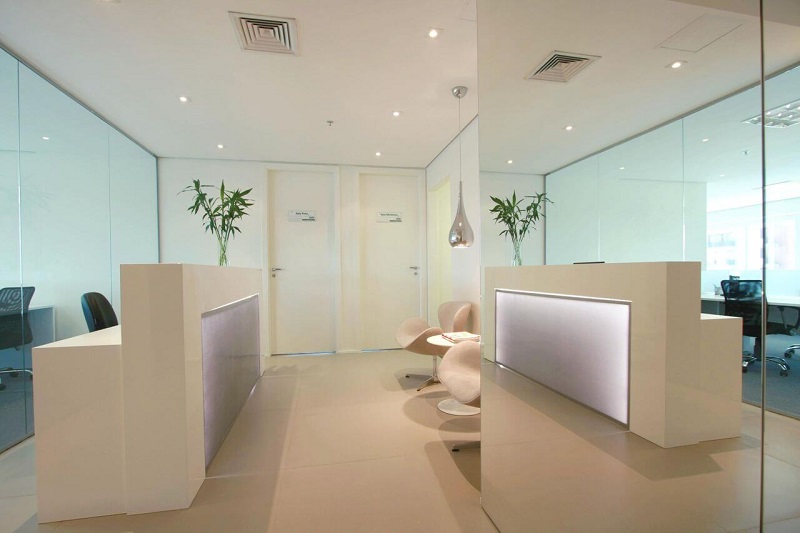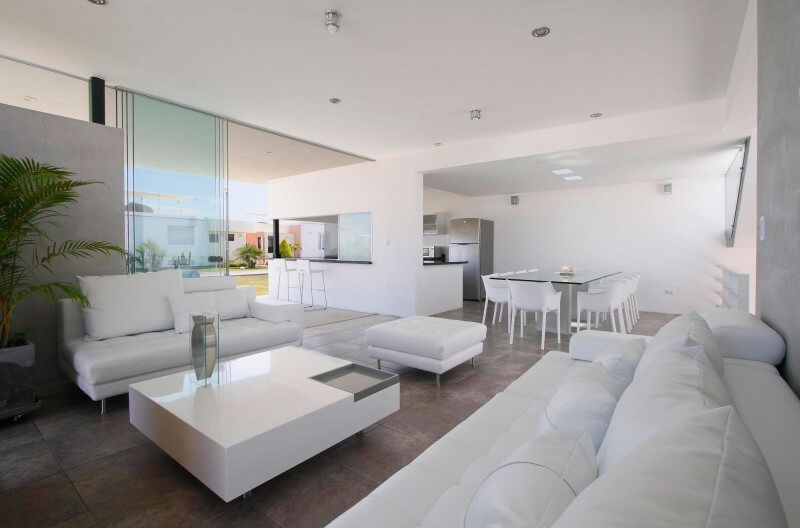Discover the clean style of decoration and design, which brings harmony and comfort to your project.
A smart way to bring harmony and lightness to your project, the clean style is an excellent option for both small and large spaces.
A style that avoids excess, it is ideal for those who want to reduce visual stimulation and create refined environments that value simplicity and good taste in decoration.
When thinking about the Clean style, keep in mind four basic values:
- Practicality
- Simplicity
- Freedom
- Applicability
The clean style aims to promote practical and functional decoration, without sacrificing the freedom to play with details that give personality to the space.
Straight lines, neutral tones, few pieces of furniture and decorative objects are some of its characteristics that help create modern and cozy designs.
A strong trend in interior design, let’s explore some aspects of the clean style.
Main characteristics of the Clean style

One of the main objectives of the clean style is to create a sense of spaciousness, avoiding clutter and disorganization.
To achieve this result, it is necessary to pay attention to different aspects and elements of the decoration.
Use of colors

The color palette of the Clean style is based on light tones. White predominates, from the walls and floors to furniture and rugs. To balance this, colors like ice and gray appear in subtle and delicate contrasts.
Cushions, vases, and other decorative items in more vibrant tones are welcome to punctuate the environment and avoid monotony.
In details such as handles, appliances, and handrails, materials like stainless steel, marble, and copper appear in their natural form, without much treatment.
The colors of plants bring harmony and life, but be careful with excesses: opt for small and delicate arrangements, with only a few larger plants.
Amplitude of the spaces

Designed to expand spaces, the Clean style is perfect for smaller areas, which benefit from the correct use of colors and other techniques that create this effect.
Glass is a great ally in this endeavor. In tabletops, shelves, or even in details such as vases and other small decorative objects, it fills the environment while simultaneously making it appear larger. Strategically placed mirrors help to enhance this perception.
Furthermore, large windows, without curtains, or with light curtains in thinner fabrics, favor the entry of natural light, which is reflected and amplified by the light tones of the walls.
All of this promotes a greater sense of freedom, freshness, and lightness, essential qualities for the well-being of residents or visitors in a commercial space.
Look back towards the horizon.

Furniture with straight, horizontal lines and without overlapping elements helps the eyes follow the horizon line, increasing the perception of length.
To minimize visual obstacles, also avoid excessive textures, both in the decoration and in the paints and coverings.
Another good idea is, if possible, to reduce the number of walls, integrating environments. A living room and kitchen without partitions, for example, create the feeling of larger rooms than they actually are.
In addition to furniture, rectangular lamps, rugs, and pictures, for example, help guide and ‘lengthen’ the view.
Always organize

In addition to these tricks to increase the perceived size of the space, it’s important to get rid of clutter. By reducing the number of unnecessary objects, you gain space and new decorating opportunities.
Organizing is much more than just putting everything in its place. It’s also about reducing the environment to its essence, making it more pleasant to be in.
Functional furniture is important because it helps maintain order and optimizes its use. In the kitchen, for example, custom-designed cabinets integrated with appliances make it easier to prepare a recipe, keeping everything in an easily accessible place.
The arrangement of furniture should be carefully considered to harmonize the elements without losing the functional character of each one. Avoid, for example, corner tables, sideboards, and shelves that don’t serve a purpose in the room.
Lighting project

Lighting in a clean design project should be planned according to the needs of each environment.
Natural light, as mentioned earlier, helps create a sense of spaciousness when reflected by light-colored walls. However, at night, artificial light should be distributed in an equally functional manner.
Versatile, the clean style adapts to the most diverse architectural projects. Contact us to learn more about how to apply clean design to your residential and/or commercial project.

